This H3-3D FPV setup guide breaks the process down into three steps. Fitting the anti-interference board (this initial part 1), fitting and configuring the gimbal (part 2) and finally fitting and configuring the FPV equipment (part 3). Feel free to skip to the appropriate step for your build. This initial step of the build we will be installing the Anti-Interference board. Whilst not essential, this is a useful piece of kit that we believe reduces video interference generated by the H3-3D gimbal and its brushless motors. Several of our customers have found their FPV video signal suffered when this board was not installed so we suggest that anyone planning on running an FPV setup with a H3-3D gimbal install one.  As per the instructions it can be placed outside the craft or internally. This first guide shows how you can mount it internally for the cleanest installation.
As per the instructions it can be placed outside the craft or internally. This first guide shows how you can mount it internally for the cleanest installation.  You will need a 2mm allen driver and a small cross-head screwdriver as pictured.
You will need a 2mm allen driver and a small cross-head screwdriver as pictured.  Open up the Zenmuse H3-3D box (only applicable to the FOR PHANTOM 2 ONLY models) and remove the accessory box that sits on top; Inside is a small silver packet.
Open up the Zenmuse H3-3D box (only applicable to the FOR PHANTOM 2 ONLY models) and remove the accessory box that sits on top; Inside is a small silver packet.  It contains the anti-interference board, the 8-pin link cable and two 3M VHB sticky pads should you wish to externally mount it.
It contains the anti-interference board, the 8-pin link cable and two 3M VHB sticky pads should you wish to externally mount it.  Next we unbox the actual Phantom 2. For the purposes of the installation we only require the Phantom 2, the battery (here sat inside) the transmitter and four AA batteries to power it. Place the Phantom upside down on the table.
Next we unbox the actual Phantom 2. For the purposes of the installation we only require the Phantom 2, the battery (here sat inside) the transmitter and four AA batteries to power it. Place the Phantom upside down on the table.  We will be using the 2mm hex driver to remove 12 screws from the bottom of the craft.
We will be using the 2mm hex driver to remove 12 screws from the bottom of the craft.  And we will be using the cross-head screwdriver to remove 4 screws from the edges of the craft. Be very careful removing these as they are fairly soft and often torqued up.
And we will be using the cross-head screwdriver to remove 4 screws from the edges of the craft. Be very careful removing these as they are fairly soft and often torqued up.  This diagram outlines where they screws sit. The pink circled ones are the 2mm hex and the blue circled ones are the cross-head screws.
This diagram outlines where they screws sit. The pink circled ones are the 2mm hex and the blue circled ones are the cross-head screws.  With the 16 screws removed and bagged for safety we are nearly ready to remove the lid.
With the 16 screws removed and bagged for safety we are nearly ready to remove the lid.  At this point we normally remove the white plaster tape securing the 8-pin and 4-pin cables so that we can adjust their positions later on.
At this point we normally remove the white plaster tape securing the 8-pin and 4-pin cables so that we can adjust their positions later on.  Carefully flipping the craft over, you can now gently lift the lid off. NOTE the GPS antenna is housed in the lid of the craft and will need unplugging before removing the lid. If it does not come, check that you have removed all of the screws from the previous step.
Carefully flipping the craft over, you can now gently lift the lid off. NOTE the GPS antenna is housed in the lid of the craft and will need unplugging before removing the lid. If it does not come, check that you have removed all of the screws from the previous step.  With the lid removed we are presented with the guts of the Phantom. Turn the craft so it faces to the right (note the arrow on top of the orange stickered flight controller to aide orientation).
With the lid removed we are presented with the guts of the Phantom. Turn the craft so it faces to the right (note the arrow on top of the orange stickered flight controller to aide orientation).  We will be removing two cross head screws that hold the mainboard down over the transmitter. The first is shown at the tip of the screwdriver, the other is to the right.
We will be removing two cross head screws that hold the mainboard down over the transmitter. The first is shown at the tip of the screwdriver, the other is to the right.  You will note that the Anti-Interference board has been shaped and designed to sit upon the mainboard and is then secured with the screws you previously removed.
You will note that the Anti-Interference board has been shaped and designed to sit upon the mainboard and is then secured with the screws you previously removed.  Here is the board screwed in place.
Here is the board screwed in place.  Next we need to wire the board in-line with the gimbal. We have found the best way is to remove the long 8-pin cable from the Zenmuse port on the mainboard (here circled in red to the left) and pull it out of the rear left chassis hole and clear of the craft. Then taking the short 8-pin cable that came in the H3-3D silver pack, link the ‘Zenmuse’ port on the board to the ‘rear’ port on the Anti-interference board. Finally connect the earlier removed long 8-pin cable to the ‘front’ port on the anti-interference board and then post it down the rear right chassis hole, you will need to release the rear two stress-relief cable ties to achieve this.
Next we need to wire the board in-line with the gimbal. We have found the best way is to remove the long 8-pin cable from the Zenmuse port on the mainboard (here circled in red to the left) and pull it out of the rear left chassis hole and clear of the craft. Then taking the short 8-pin cable that came in the H3-3D silver pack, link the ‘Zenmuse’ port on the board to the ‘rear’ port on the Anti-interference board. Finally connect the earlier removed long 8-pin cable to the ‘front’ port on the anti-interference board and then post it down the rear right chassis hole, you will need to release the rear two stress-relief cable ties to achieve this.  We run the cables under the receiver wires to try and keep the job tidy. The multi-colour 4-pin cam cable is also retracted inside and tied out of the way as we will not be using this.
We run the cables under the receiver wires to try and keep the job tidy. The multi-colour 4-pin cam cable is also retracted inside and tied out of the way as we will not be using this.  It’s always a good idea to re-tie any cables that have been unclipped to aide in stress-relief.
It’s always a good idea to re-tie any cables that have been unclipped to aide in stress-relief.  Replacement is largely reversal of removal. Ensure that you re-attached the GPS plug before the lid goes on or you will get an error. Also it is imperative that the lid is placed in the correct orientation or the GPS will not function correctly. Use the plastic moulding for the stickers on the front arms to help line up the lid before screwing it all down. Do not over-tighten the outer cross-head screws.
Replacement is largely reversal of removal. Ensure that you re-attached the GPS plug before the lid goes on or you will get an error. Also it is imperative that the lid is placed in the correct orientation or the GPS will not function correctly. Use the plastic moulding for the stickers on the front arms to help line up the lid before screwing it all down. Do not over-tighten the outer cross-head screws.
 As per the instructions it can be placed outside the craft or internally. This first guide shows how you can mount it internally for the cleanest installation.
As per the instructions it can be placed outside the craft or internally. This first guide shows how you can mount it internally for the cleanest installation.  You will need a 2mm allen driver and a small cross-head screwdriver as pictured.
You will need a 2mm allen driver and a small cross-head screwdriver as pictured.  Open up the Zenmuse H3-3D box (only applicable to the FOR PHANTOM 2 ONLY models) and remove the accessory box that sits on top; Inside is a small silver packet.
Open up the Zenmuse H3-3D box (only applicable to the FOR PHANTOM 2 ONLY models) and remove the accessory box that sits on top; Inside is a small silver packet.  It contains the anti-interference board, the 8-pin link cable and two 3M VHB sticky pads should you wish to externally mount it.
It contains the anti-interference board, the 8-pin link cable and two 3M VHB sticky pads should you wish to externally mount it.  Next we unbox the actual Phantom 2. For the purposes of the installation we only require the Phantom 2, the battery (here sat inside) the transmitter and four AA batteries to power it. Place the Phantom upside down on the table.
Next we unbox the actual Phantom 2. For the purposes of the installation we only require the Phantom 2, the battery (here sat inside) the transmitter and four AA batteries to power it. Place the Phantom upside down on the table.  We will be using the 2mm hex driver to remove 12 screws from the bottom of the craft.
We will be using the 2mm hex driver to remove 12 screws from the bottom of the craft.  And we will be using the cross-head screwdriver to remove 4 screws from the edges of the craft. Be very careful removing these as they are fairly soft and often torqued up.
And we will be using the cross-head screwdriver to remove 4 screws from the edges of the craft. Be very careful removing these as they are fairly soft and often torqued up.  This diagram outlines where they screws sit. The pink circled ones are the 2mm hex and the blue circled ones are the cross-head screws.
This diagram outlines where they screws sit. The pink circled ones are the 2mm hex and the blue circled ones are the cross-head screws.  With the 16 screws removed and bagged for safety we are nearly ready to remove the lid.
With the 16 screws removed and bagged for safety we are nearly ready to remove the lid.  At this point we normally remove the white plaster tape securing the 8-pin and 4-pin cables so that we can adjust their positions later on.
At this point we normally remove the white plaster tape securing the 8-pin and 4-pin cables so that we can adjust their positions later on.  Carefully flipping the craft over, you can now gently lift the lid off. NOTE the GPS antenna is housed in the lid of the craft and will need unplugging before removing the lid. If it does not come, check that you have removed all of the screws from the previous step.
Carefully flipping the craft over, you can now gently lift the lid off. NOTE the GPS antenna is housed in the lid of the craft and will need unplugging before removing the lid. If it does not come, check that you have removed all of the screws from the previous step.  With the lid removed we are presented with the guts of the Phantom. Turn the craft so it faces to the right (note the arrow on top of the orange stickered flight controller to aide orientation).
With the lid removed we are presented with the guts of the Phantom. Turn the craft so it faces to the right (note the arrow on top of the orange stickered flight controller to aide orientation).  We will be removing two cross head screws that hold the mainboard down over the transmitter. The first is shown at the tip of the screwdriver, the other is to the right.
We will be removing two cross head screws that hold the mainboard down over the transmitter. The first is shown at the tip of the screwdriver, the other is to the right.  You will note that the Anti-Interference board has been shaped and designed to sit upon the mainboard and is then secured with the screws you previously removed.
You will note that the Anti-Interference board has been shaped and designed to sit upon the mainboard and is then secured with the screws you previously removed.  Here is the board screwed in place.
Here is the board screwed in place.  Next we need to wire the board in-line with the gimbal. We have found the best way is to remove the long 8-pin cable from the Zenmuse port on the mainboard (here circled in red to the left) and pull it out of the rear left chassis hole and clear of the craft. Then taking the short 8-pin cable that came in the H3-3D silver pack, link the ‘Zenmuse’ port on the board to the ‘rear’ port on the Anti-interference board. Finally connect the earlier removed long 8-pin cable to the ‘front’ port on the anti-interference board and then post it down the rear right chassis hole, you will need to release the rear two stress-relief cable ties to achieve this.
Next we need to wire the board in-line with the gimbal. We have found the best way is to remove the long 8-pin cable from the Zenmuse port on the mainboard (here circled in red to the left) and pull it out of the rear left chassis hole and clear of the craft. Then taking the short 8-pin cable that came in the H3-3D silver pack, link the ‘Zenmuse’ port on the board to the ‘rear’ port on the Anti-interference board. Finally connect the earlier removed long 8-pin cable to the ‘front’ port on the anti-interference board and then post it down the rear right chassis hole, you will need to release the rear two stress-relief cable ties to achieve this.  We run the cables under the receiver wires to try and keep the job tidy. The multi-colour 4-pin cam cable is also retracted inside and tied out of the way as we will not be using this.
We run the cables under the receiver wires to try and keep the job tidy. The multi-colour 4-pin cam cable is also retracted inside and tied out of the way as we will not be using this.  It’s always a good idea to re-tie any cables that have been unclipped to aide in stress-relief.
It’s always a good idea to re-tie any cables that have been unclipped to aide in stress-relief.  Replacement is largely reversal of removal. Ensure that you re-attached the GPS plug before the lid goes on or you will get an error. Also it is imperative that the lid is placed in the correct orientation or the GPS will not function correctly. Use the plastic moulding for the stickers on the front arms to help line up the lid before screwing it all down. Do not over-tighten the outer cross-head screws.
Replacement is largely reversal of removal. Ensure that you re-attached the GPS plug before the lid goes on or you will get an error. Also it is imperative that the lid is placed in the correct orientation or the GPS will not function correctly. Use the plastic moulding for the stickers on the front arms to help line up the lid before screwing it all down. Do not over-tighten the outer cross-head screws.
-

-

-

-

-

-
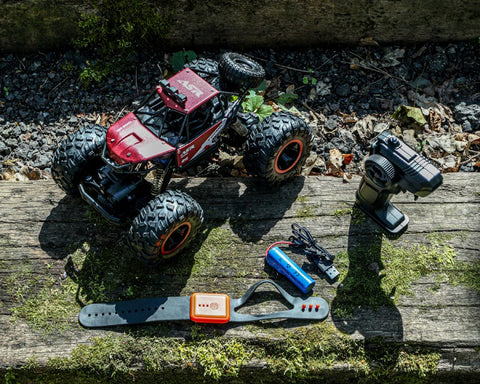
-

-

-

-
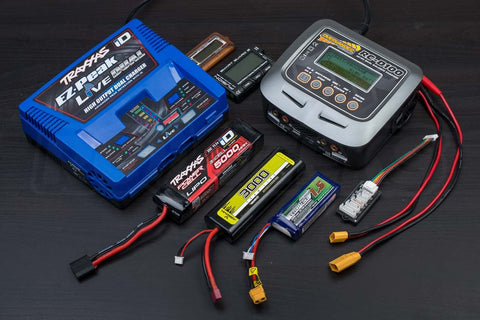
-
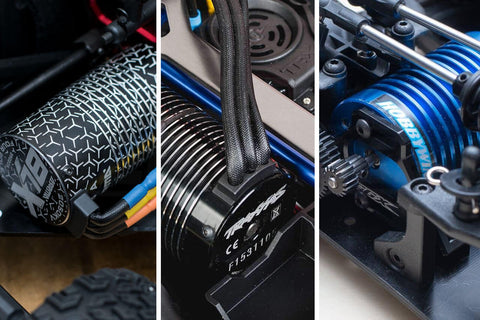
-

-

-

-

-

-

-

-

-

-

-

-
 reviews
reviewsAxial SCX10 II Jeep Cherokee Scale Crawler Review : Does it live up to its reputa...
Tom Begley | -

-

-

-

-

-

-

-

-

-

-

-

-

-

-
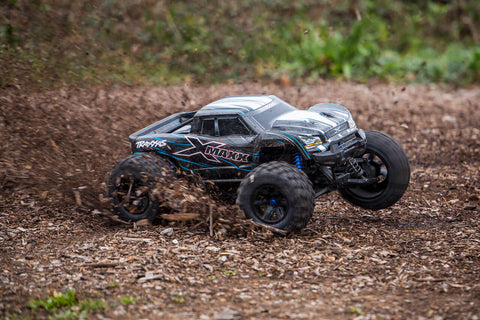
-
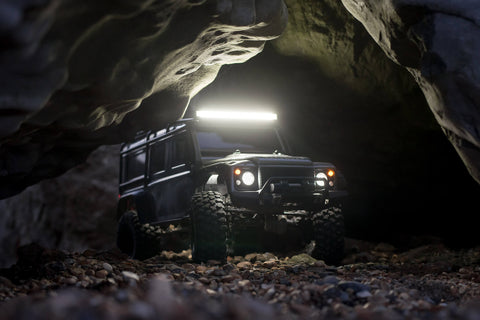
-

-

-

-

-

-

-
 tutorial
tutorialMavic 2 & DJI Goggles : The ultimate pairing in filming, inspections & surveys
Tom Begley | -

-

-

-

-

-

-

-

-

-

-

-

-

-

-

-

-

-

-
 reviews
reviewsFrSKY's Taranis Q X7 Transmitter - A budget alternative to the Taranis Plus X9D?
Tom Begley | -

-

-

-

-

-

-

-

-

-

-

-

-

-

-

-

-

-

-

-

-

-

-

-

-

-

-

-

-

-

-

-

-

-

-

-

-

-

-

-

-

-












































































































